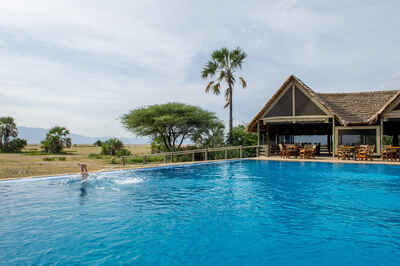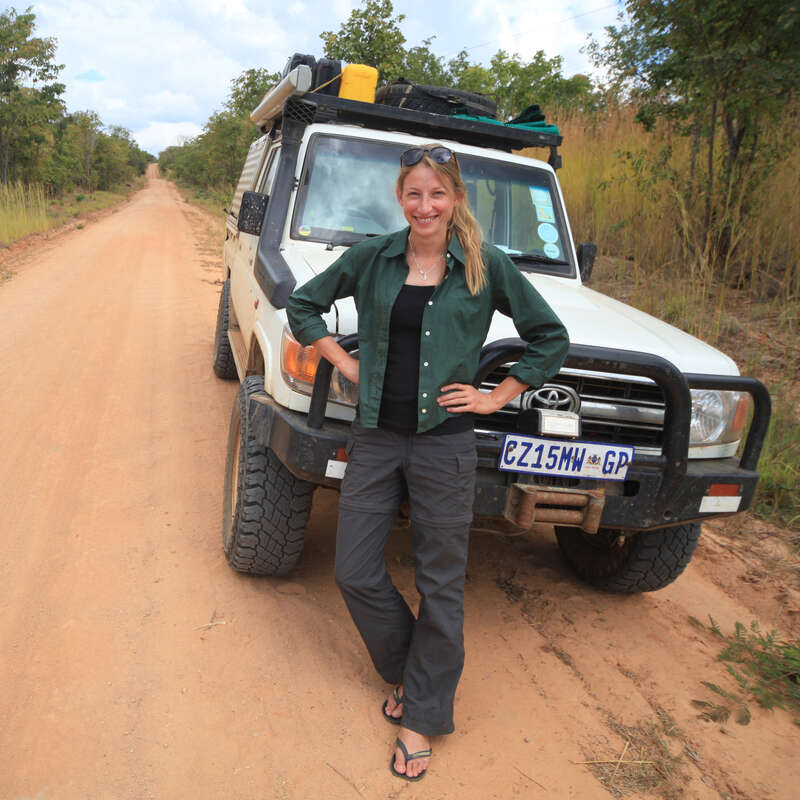About Maramboi Tented Camp
Located on the Minjingo Concession, a Wildlife Management Area sandwiched between Tarangire National Park ...
... and Lake Manyara, Maramboi Tented Camp is a relatively large, permanent tented lodge that offers an elegant, yet economical choice for those on a driving itinerary.
With 46 tents, this is a large property, and it lacks the intimacy and personal service you’d find at smaller camps. However, Maramboi Tented Camp offers a good balance of style and economy for guests on a driving itinerary who are happy to stay just outside the national park. And the camp is well suited to families and larger groups.
Our view
With 46 tents, this is a large property, and it lacks the intimacy and personal service you’d find at smaller camps. However, Maramboi Tented Camp offers a good balance of style and economy for guests on a driving itinerary who are happy to stay just outside the national park. And the camp is well suited to families and larger groups.
Accommodation
46 tented rooms
Children
Best for 6+
Open
All year
Activities

4WD Safari

Birdwatching

Hot air ballooning

Private activities
Traveller reviews of Maramboi Tented Camp
2 real, un-edited reviews from Expert Africa's travellers.
Arrived 4 Jul 2023, 2 nights
"Maramboi Tented Camp review"
Overall rating: Excellent
Arrived 24 Jun 2019, 3 nights
"Very friendly and fun"
Overall rating: Excellent
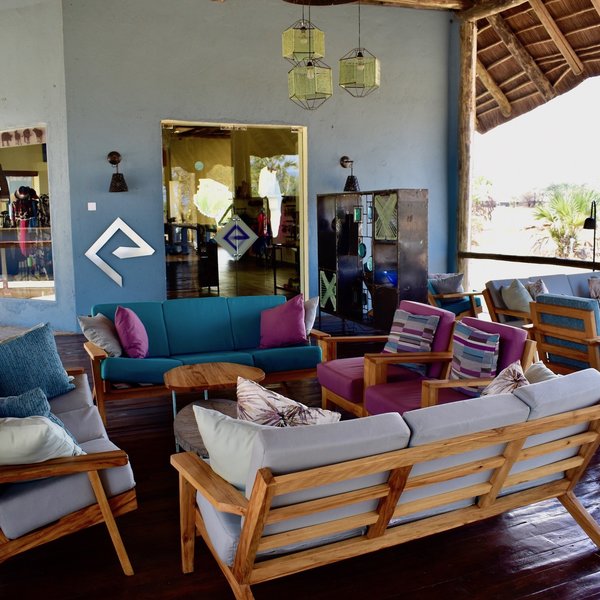
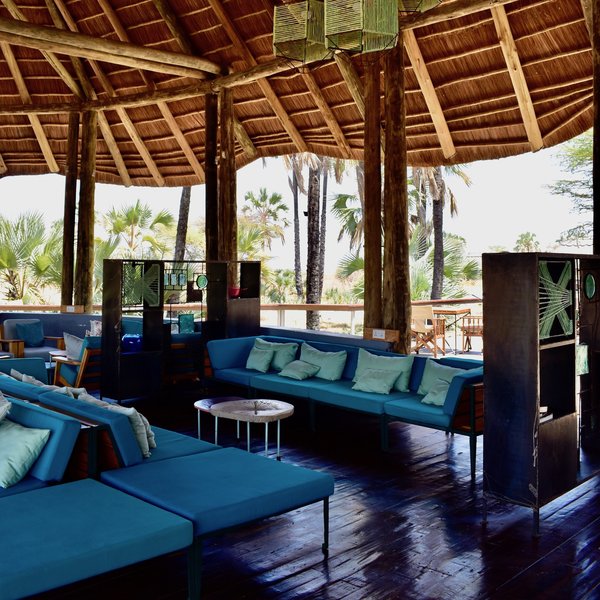
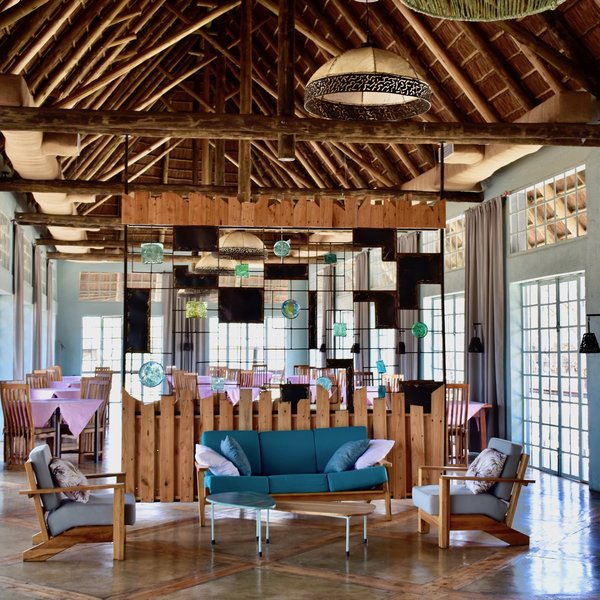
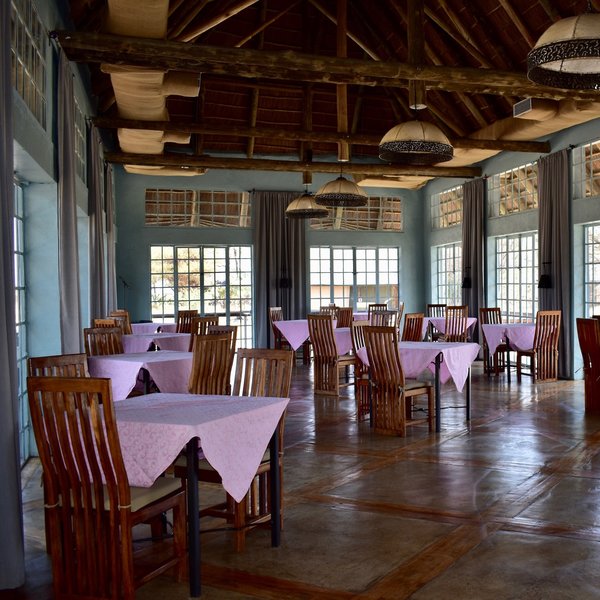
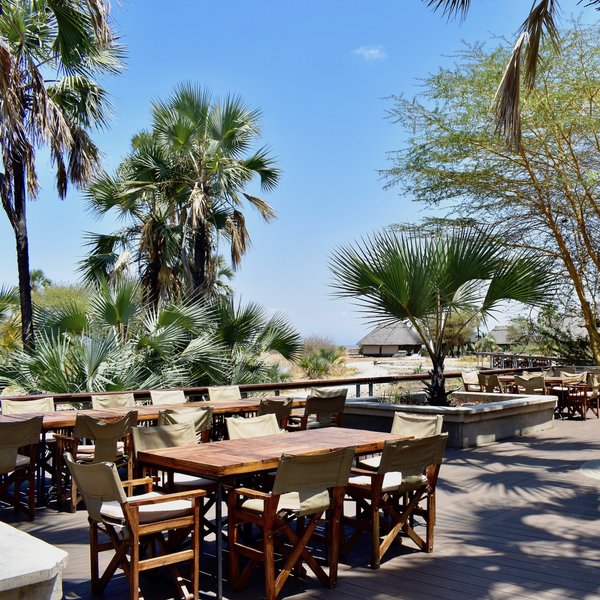
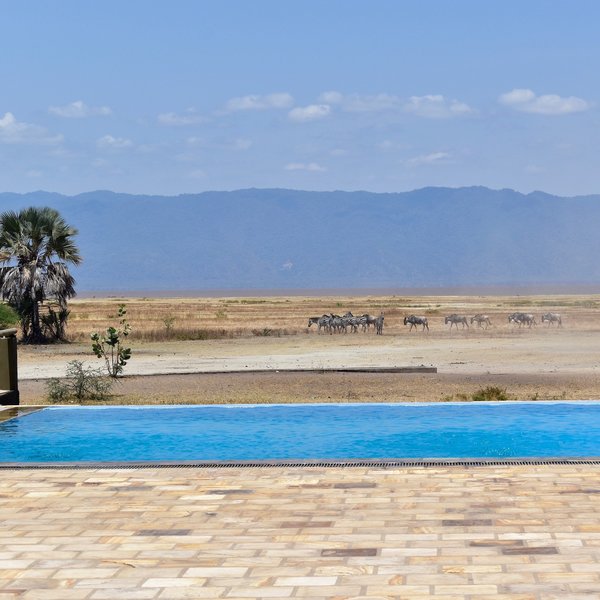

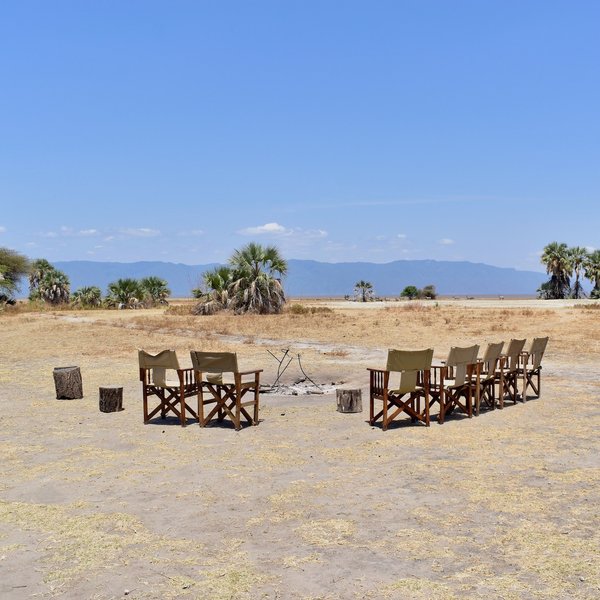
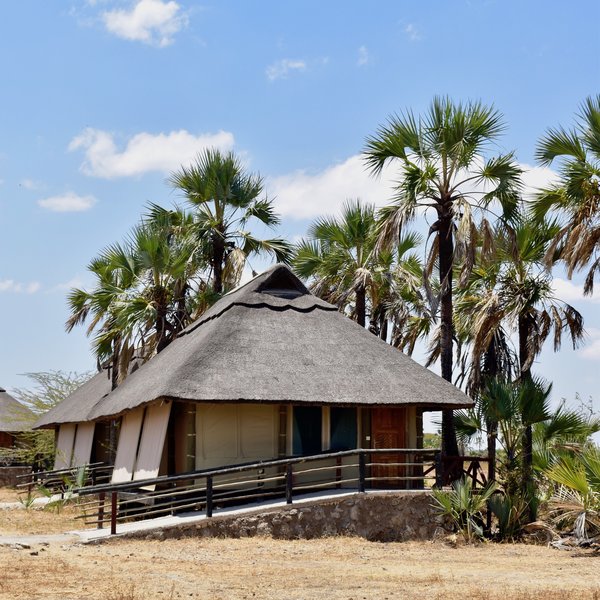
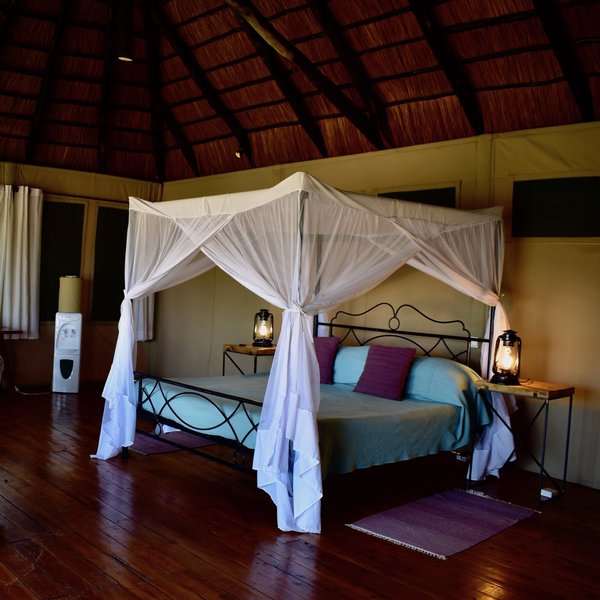
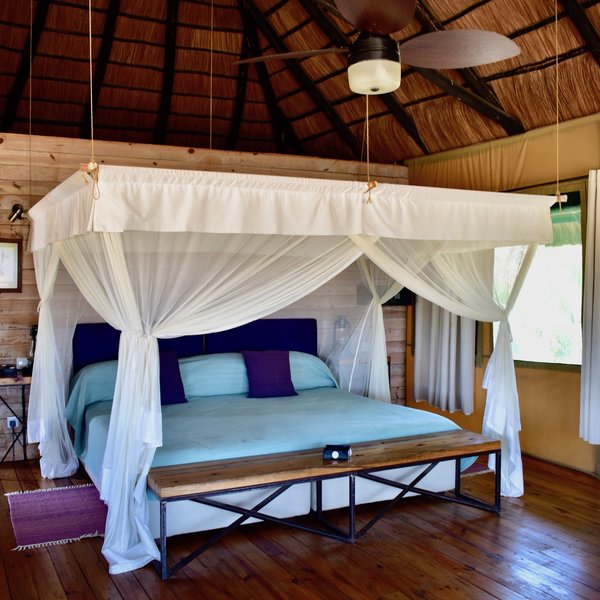
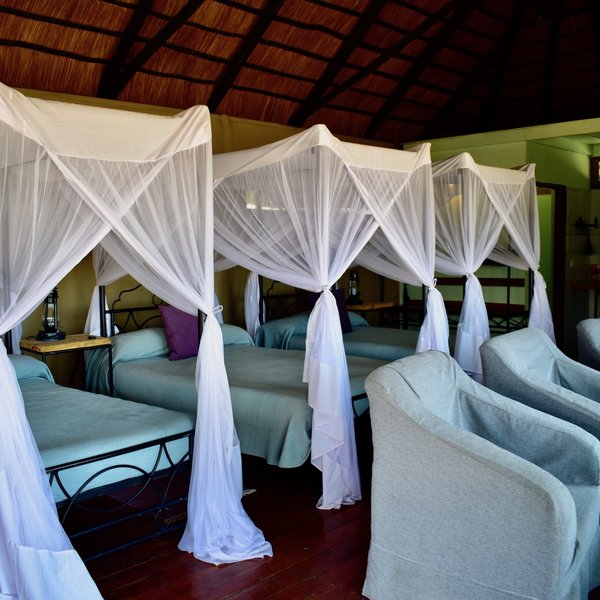
Expert Africa's gallery
When we travel we take lots of photos ourselves to give you a real and un-edited view of the safaris. See our 12 pictures of Maramboi Tented Camp to get the candid view.
View galleryMaramboi Tented Camp: Our full report
Located on the Minjingo Concession, a Wildlife Management Area sandwiched between Tarangire National Park ...
... and Lake Manyara, Maramboi Tented Camp is a relatively large, permanent tented lodge that offers an elegant, yet economical choice for those on a driving itinerary.
The main communal areas of Maramboi Tented Camp comprise a series of thatched structures connected by wooden decking, offering attractive views of the surrounding grassy floodplains of Lake Manyara. The landscape around the camp is flat and open, characterised by numerous tall palm trees. On a clear day you can see Ol Doinyo Lengai (a 350,000-year-old active volcano) in the far distance.
Past a small reception and office, you come to Maramboi’s lounge area. The camp’s communal areas have recently undergone a soft refurbishment and re-fresh when we visited in 2018, and we loved the laid-back, contemporary décor, and the choice of colour. In the lounge you’ll find a number of soft seats, overlooking the savannah, a perfect place to enjoy a drink before dinner. There is a complimentary tea and coffee station to the side of the lounge, which guests are encouraged to make use of during their stay.
To the right of the lounge is the dining room with individual tables and space for a buffet to be laid out. It is simple in design but perfectly adequate. Weather permitting, you can also choose to eat on the outside decking. Opposite the dining room is a small shop selling a range of locally made curios and Tanzanite.
The 46 tented rooms at Maramboi are canvas-chalet-style, raised up on wooden platforms, with tall thatched roofs. They are spacious and very similar in style to Maramboi’s sister camp Kubu Kubu in the Central Serengeti. The tents are fairly simply furnished, but comfortable, in keeping with the rest of the camp.
The large iron beds are draped in mosquito nets. Beside each bed is an electric storm lantern and a UK-style plug point for charging batteries. There are a couple of comfy chairs, a free-standing fan, a small writing desk and a water dispenser.
To the side of the tent you’ll find a fully plumbed in en-suite bathroom. The shower and toilet are behind separate doors for privacy.
Rooming configurations here are flexible, which makes this a good camp for larger families or groups of friends travelling together. There are several triple rooms, and five interconnected family tents. The standard tents can be arranged as doubles or twins.
There is a relaxed and friendly atmosphere at Maramboi, and the camp has a light, breezy feel. Despite our visit taking place on a very hot day, the communal areas and the tented rooms remained nice and cool.
Maramboi is one of the few camps in the area to have a swimming pool - which looked very inviting when we were there. The pool overlooks the surrounding plains, so you can watch wildlife while taking a dip. There is a pool bar serving light snacks and drinks and plenty of shaded seating. We thought this area was particularly well suited to families travelling with children, though you do need to note there is no lifeguard on duty so you will need to supervise little ones at all times.
From Maramboi you usually head out on activities with your own private vehicle and guide. Both Lake Manyara National Park and Tarangire National Park are easily reached. However, as the camp is on a concession outside the national parks, you can also arrange walking safaris from camp.
Activities
4WD Safari
Birdwatching
Hot air ballooning
Private activities
Families & children
- Attitude towards children
- Children of all ages welcome.
- Property’s age restrictions
- There are no age restrictions at Maramboi Tented Camp.
- Special activities & services
- There are no special activities or services for children.
- Equipment
- Highchairs are available in the dining room.
- Generally recommended for children
- Maramboi Tented Camp is a relaxed and welcoming place that would be a great place for families, and children will especially enjoy the large pool area. However wild animals do pass through the camp so parents must always supervise their children.
- Notes
- The camp is unfenced, and parents should be aware that large animals frequently wander through the area.
Food & drink
- Usual board basis
- Full Board
- Food quality
- We didn’t have time to eat at Maramboi Tented Camp on our last visit in 2018, however having visited and stayed at the Maramboi’s sister properties on multiple occasions, we know what to expect, and the manager showed us some sample menus.
The breakfast buffet is typically served from 6.00am until 9.00am and consists of plenty of fruit, fresh bread, cereals, deli meats and sausages and an egg and pancake station, where the omelettes are always popular.
Most guests take a boxed lunch out with them on a full-day game drive. These picnics are based on a self-service concept, so you choose from a spread of cold meat and sausages, sandwiches, wraps and quiches, plus sweet treats and fruit.
Dinner is usually a buffet, unless the lodge is particularly quiet. If this is the case they serve it à la carte with a couple of choices per course. You can expect a selection of soups, salads, stir fries, grilled meats or fish, fresh vegetables and a range of deserts.
The camp has a children’s menu and special dietary requirements can be catered for with advance notice.
Complimentary tea and coffee are available from a self-service bar throughout the day and filtered drinking water is available round the clock. - Dining style
- Individual Tables
- Dining locations
- Indoor and Outdoor Dining
- Further dining info, including room service
- Possible with prior arrangement.
- Drinks included
- Drinks included. Premium wines and spirits additional charge.
Our travellers’ wildlife sightings from Maramboi Tented Camp
Since mid-2018, many of our travellers who stayed at Maramboi Tented Camp have kindly recorded their wildlife sightings and shared them with us. The results are below. Click an animal to see more, and here to see more on our methodology.

100% success

100% success

100% success

100% success

100% success

100% success

100% success

50% success

50% success

50% success

0% success

0% success

0% success

0% success

0% success

0% success
Getting there
- Location
- Tarangire National Park, Tanzania
- Ideal length of stay
- 2 or 3 nights.
- Directions
- Maramboi Tented Camp is about a 20-minute drive from Tarangire National Park main gate. It is around a 2-hour drive from Arusha.
- Accessible by
- Fly-and-Transfer
Communications
- Power supply notes
- The camp has 24 hour electricity and there is a back-up generator.
- Communications
- There is WiFi throughout the lodge, to access this, vouchers need to be purchased from reception.
- TV & radio
- There is no TV.
- Water supply
- Borehole
- Water supply notes
- All bathrooms are fully plumbed in, with hot and cold running water. A small solar tank is located outside each tent proving a plentiful supply of hot water.
Health & safety
- Medical care
- There is a first-aid kit at reception and a number of staff are first aid trained. For serious emergencies medical treatment would be sought in Arusha or Karatu.
- Dangerous animals
- High Risk
- Security measures
- There are askaris (local guards) patrolling throughout the day and night. Guests are always accompanied after dark, and the camp has a couple of tuk tuks often used in the evening.
- Fire safety
- There are fire extinguishers by each room.
Useful info
- Disabled access
- On Request
- Laundry facilities
- Laundry is available at a cost of around $1 per item. This is typically a 24-hour service.
- Money
- There are electronic safes in all tented rooms and small amounts of currency can be exchanged, including GB pounds and Euros.
- Accepted payment on location
- Travellers can pay for any extras with cash or card. All major cards are accepted, including MasterCard and Visa, although there is a 5% surcharge
Plan and book your trip with Expert Africa
All of our trips are tailor-made, so we'll always adapt them to suit you. Talk to an Expert and let us plan and arrange your perfect trip.

Talk to an Expert
Call or email us now! We’ll match you with the Specialist in our team who is best suited to help you. Then together we can start planning your trip.

Set up your itinerary
Based on our experience and your ideas, your specialist will create a detailed, costed itinerary. We’ll refine it together, until we have a trip that you’re perfectly happy with.

Prepare for your trip
The same Specialist will make the seamless arrangements for your trip, send you detailed travel documents, and be available to answer any questions before you depart.

Travel with peace of mind
After you set off, you’ll be cared for by our partners in Africa, most of whom have worked with Expert Africa for decades. And if you ever need us urgently, we’re available 24/7.

When you return
We love to learn about your trip, and so will always be grateful if you’ve the time to give feedback to your Specialist when you return.
Maramboi Tented Camp's location
Look closer at the environment and surroundings of Maramboi Tented Camp.
Excursions from Maramboi Tented Camp
Optional extra day-trips and excursions possible whilst you're staying at Maramboi Tented Camp. Talk to us: these are usually best arranged before you go.
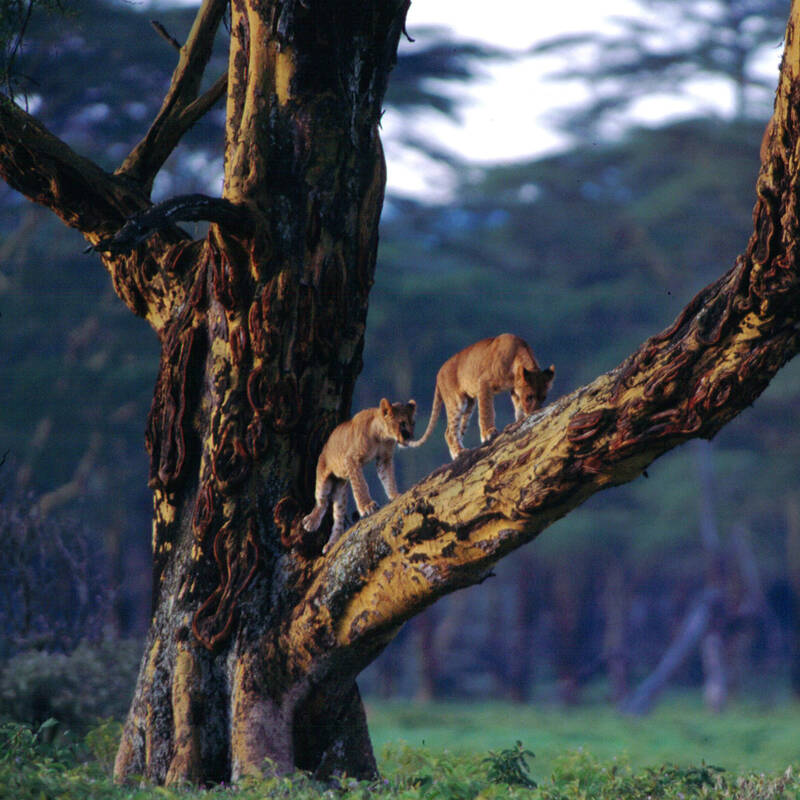
Lake Manyara Safari
Half-day or full-day
Set against the spectacular backdrop of the Rift Valley escarpment, Lake Manyara National Park makes a great safari destination. Here, along with elephant herds and plains game, you’ll find jungle-like forests that are home to blue monkeys, a soda lake tinged pink by flamingos and some of Tanzania’s best birding.
More about Lake Manyara Safari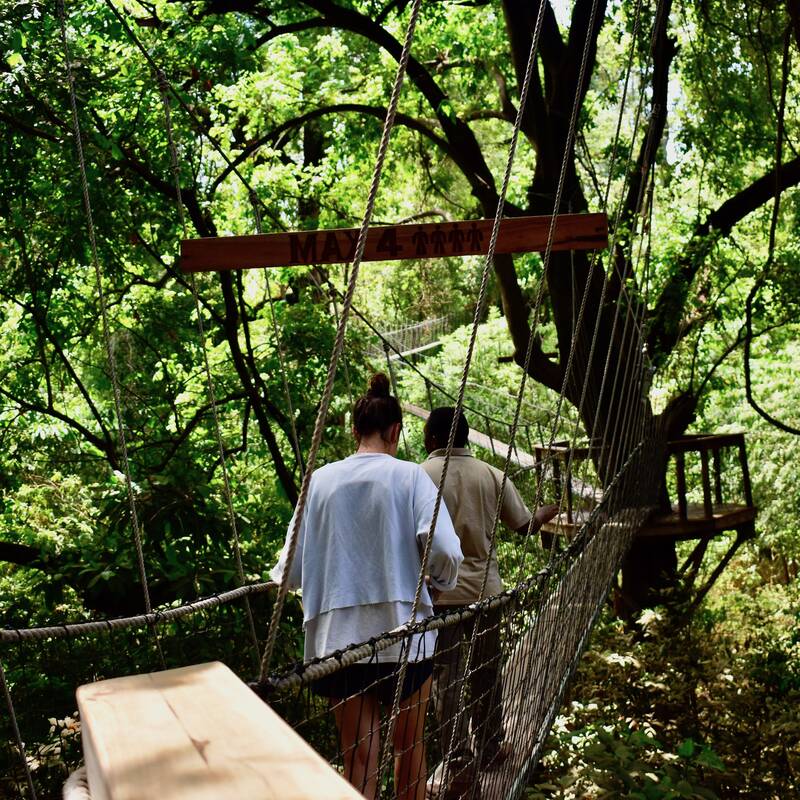
Lake Manyara Treetop Walkway
Usually one hour
Experience the forest of Lake Manyara National Park from a whole new perspective – high up in the trees. The first suspended walkway in Tanzania, it stretches underneath the canopy for 370m between the mahogany and fig trees, giving intrepid visitors a unique view of the surrounding flora and fauna.
More about Manyara Treetop WalkOther lodges in Tarangire National Park
Alternative places to stay in this same area.
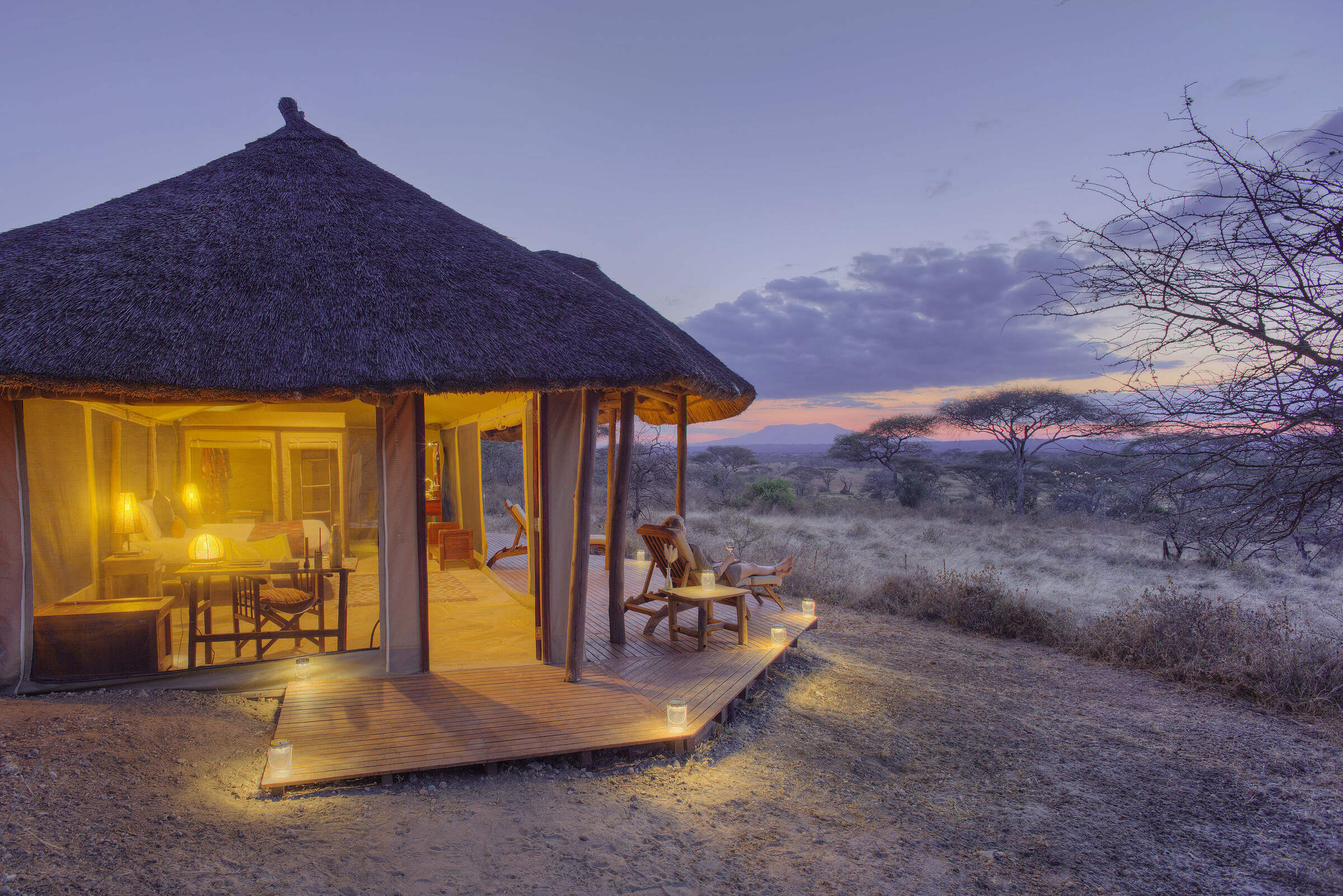
Oliver's Camp
Oliver's Camp is a small, intimate, luxury tented camp in a great location in northern Tanzania's Tarangire National Park.
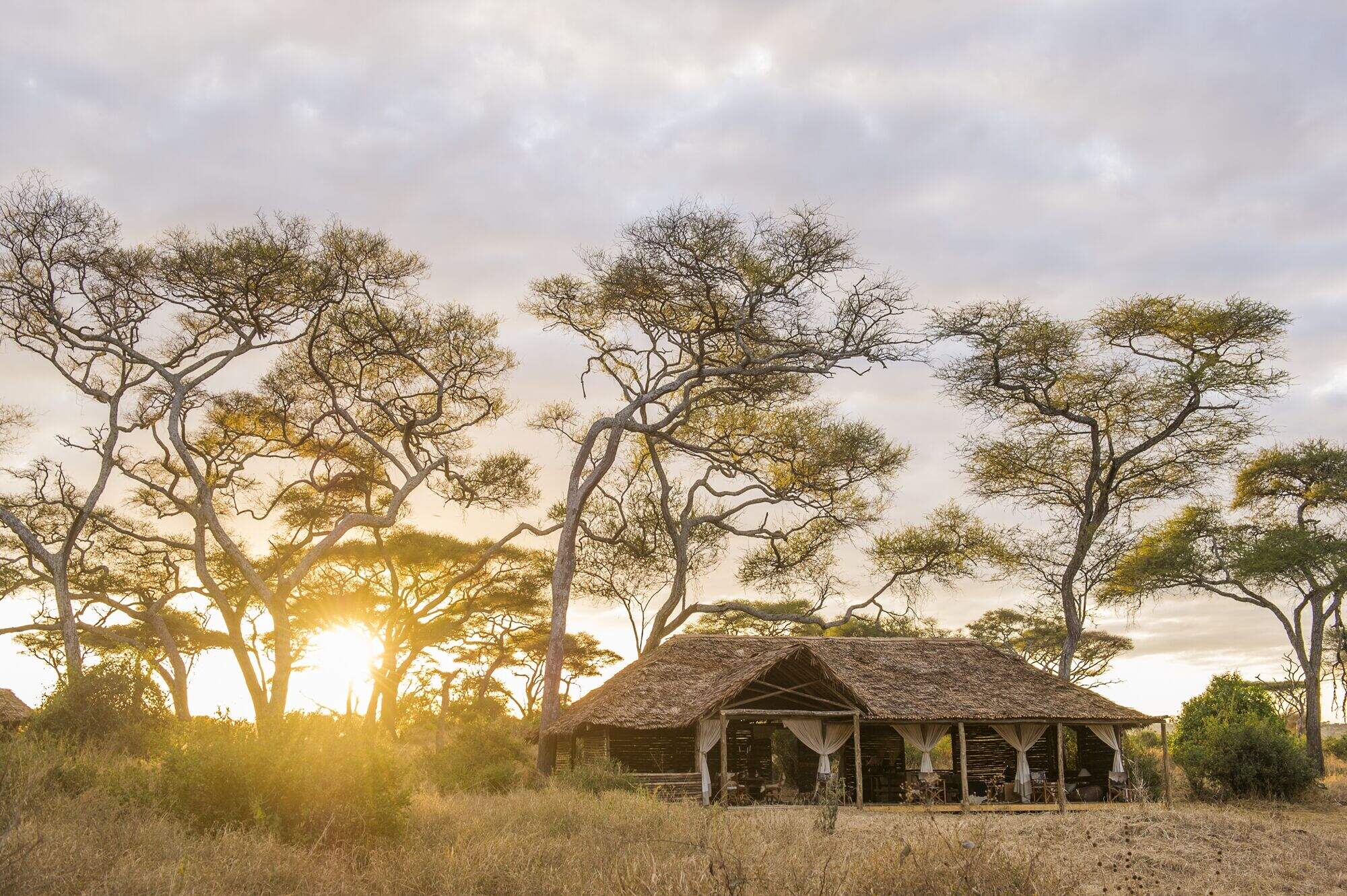
Kuro Tarangire
Kuro Tarangire is a stylish tented camp, located in a quiet and remote area deep in Tarangire National Park.
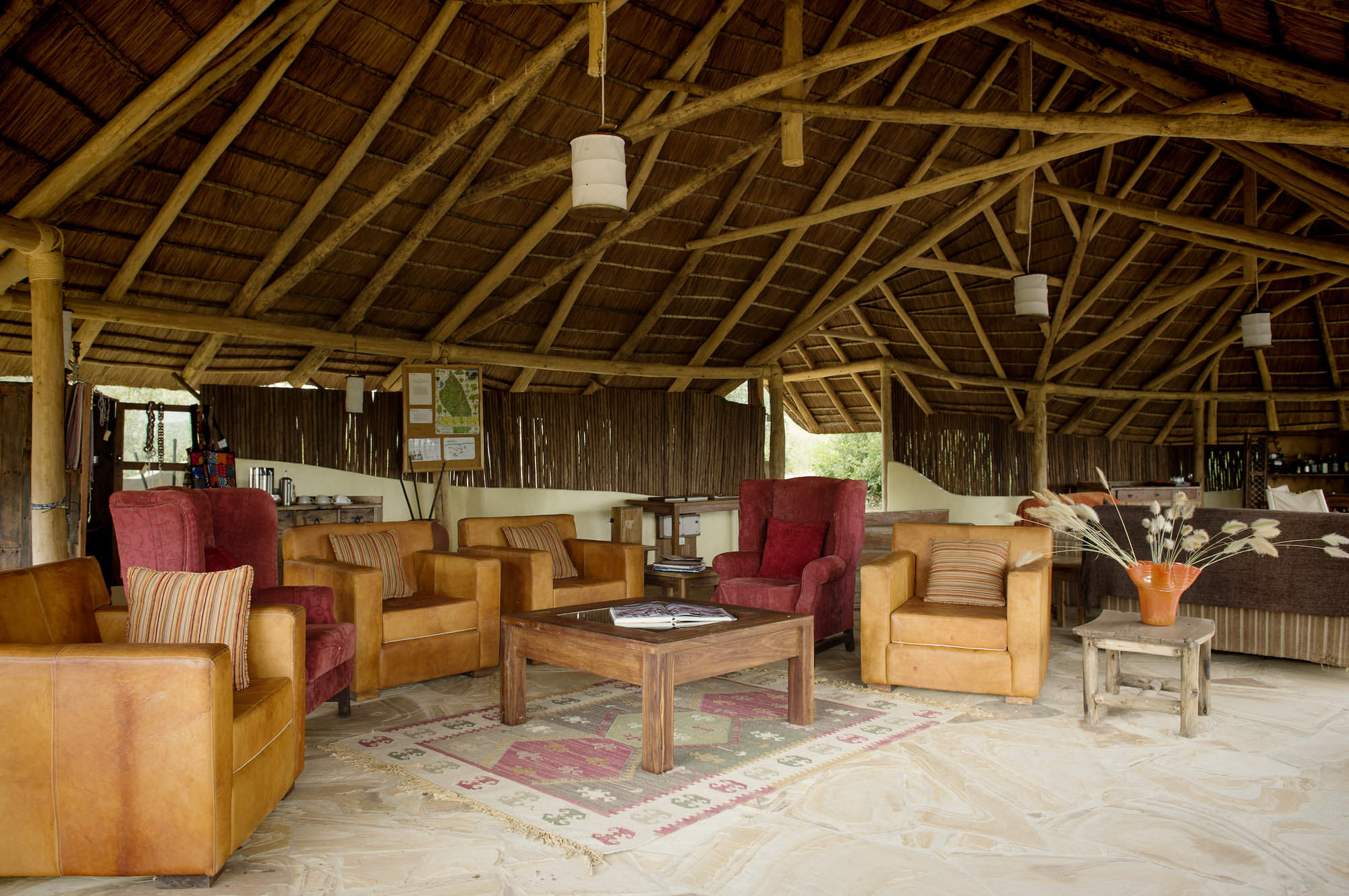
Little Oliver's
For a more private version of its sister property, Oliver’s Camp, Little Oliver’s offers high-quality guiding and tented rooms.
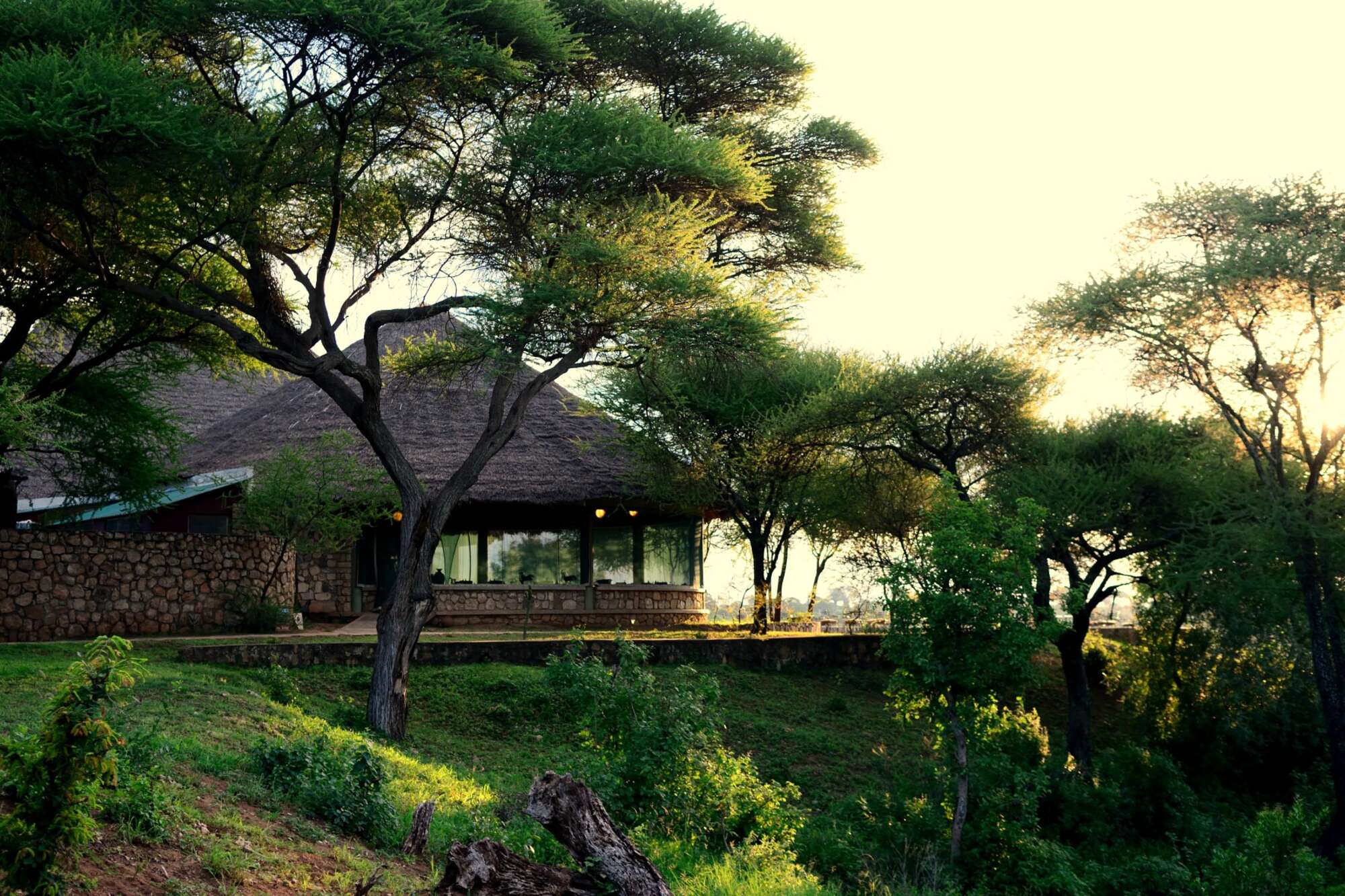
Tarangire Safari
Functional Tarangire Safari Lodge is one of Tarangire National Park's larger lodges, on a prime central site overlooking the river.
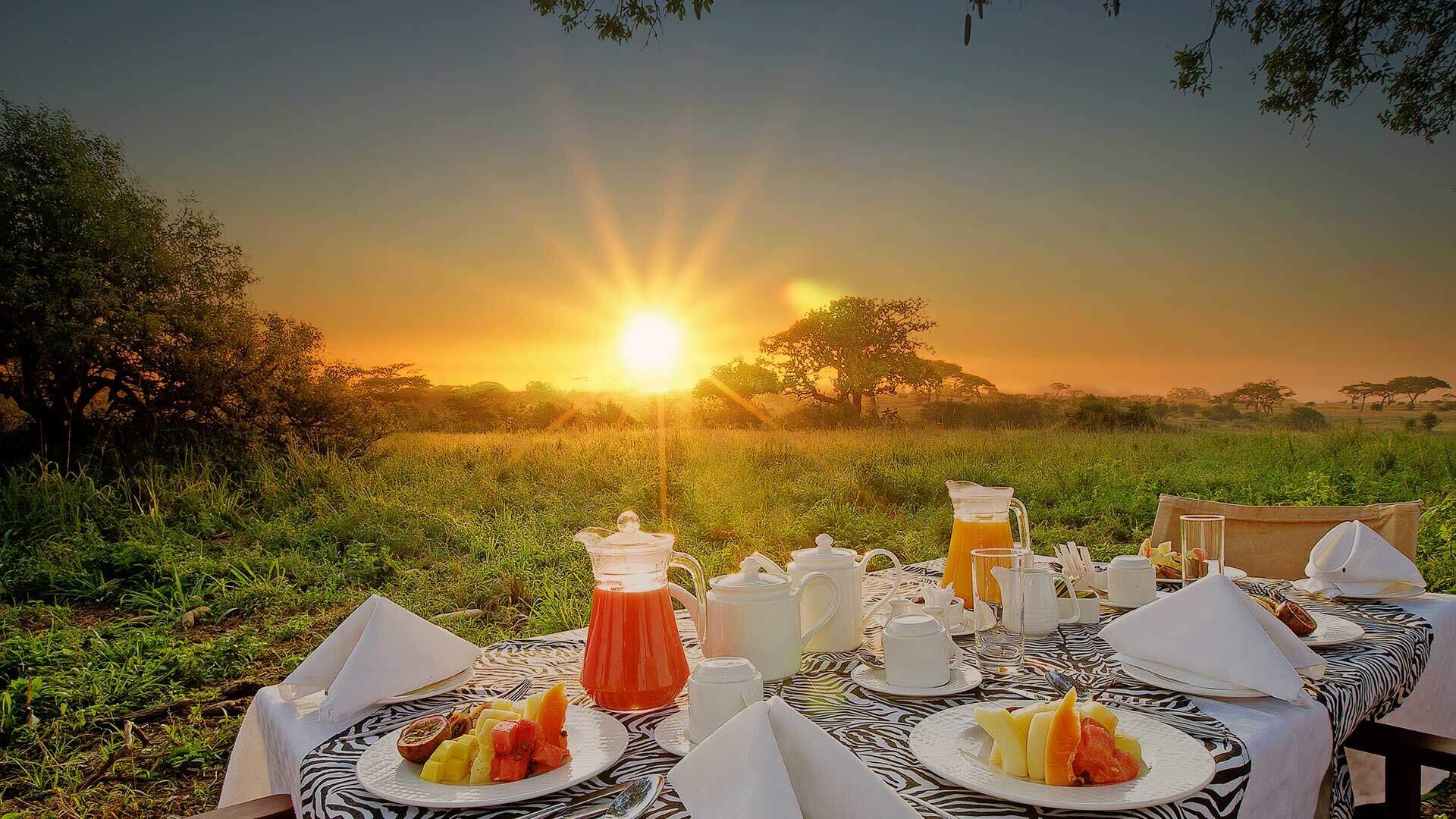
Tarangire Sopa Lodge
Tarangire Sopa Lodge is a large, comfortable, family-friendly hotel in Tarangire National Park, suitable for travellers on a budget.
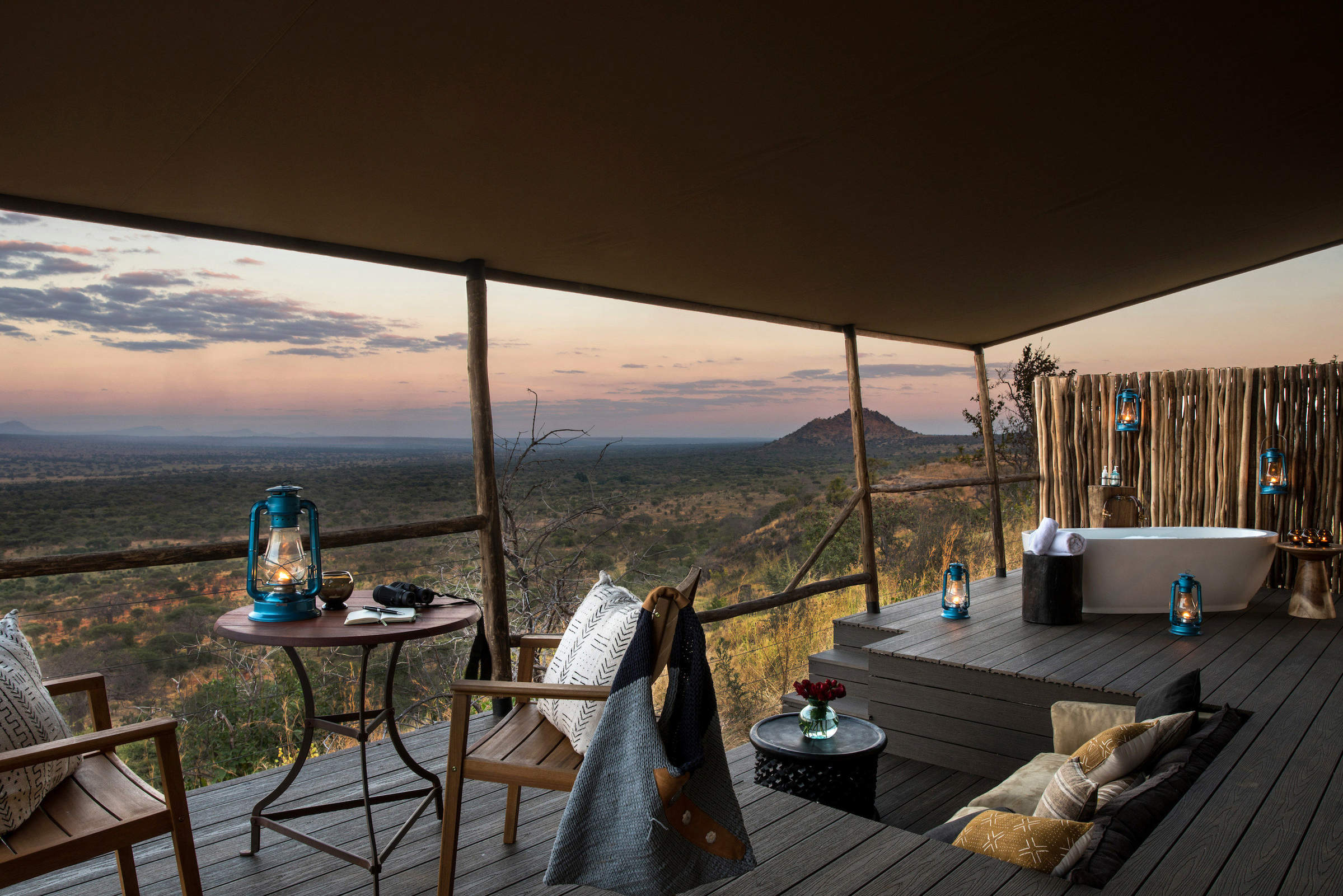
Lemala Mpingo Ridge
Lemala Mpingo Ridge is a stylish camp in Tarangire National Park, with a beautiful location and elevated views over the park.
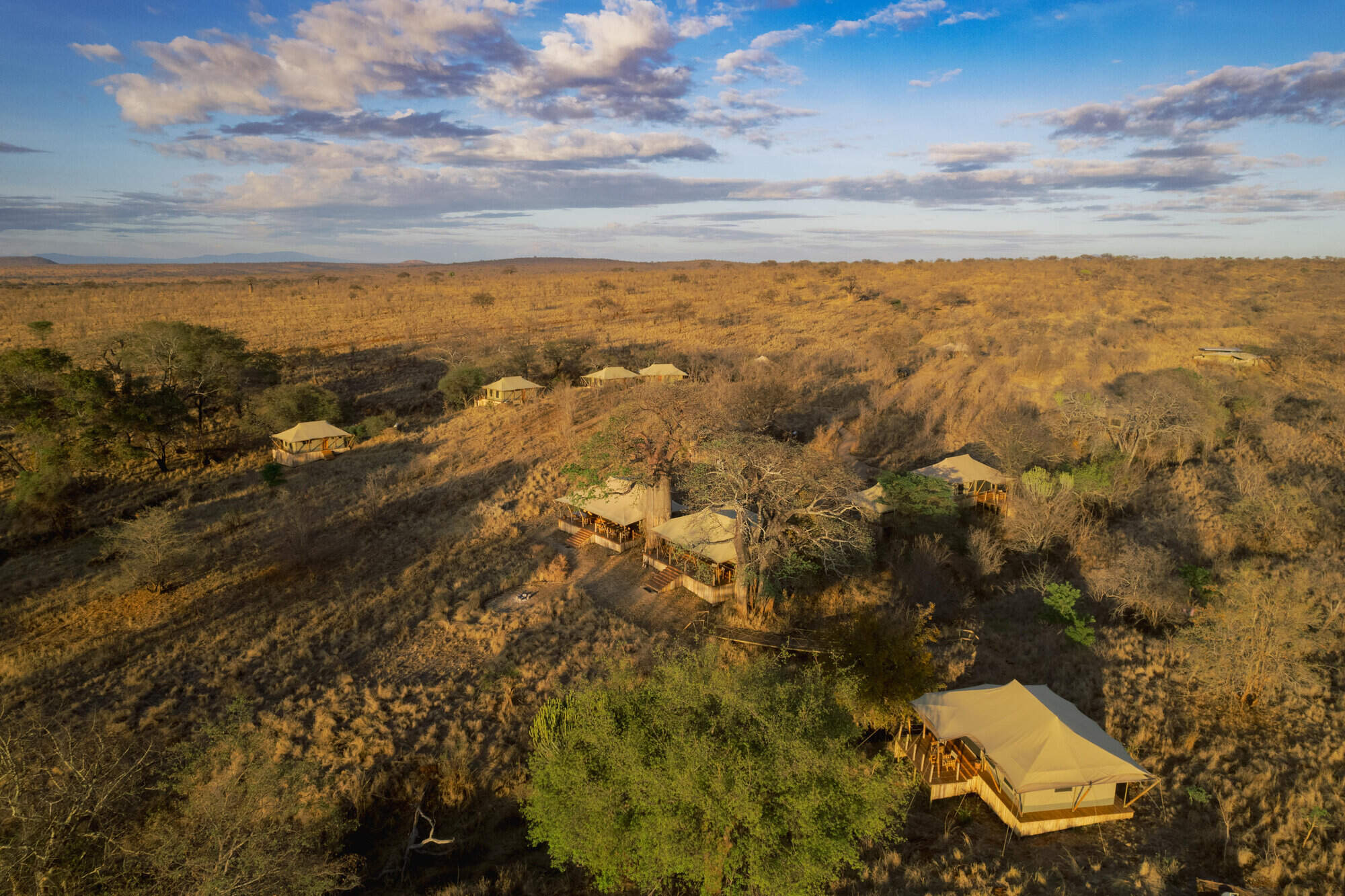
Olkeri Camp
Olkeri is a comfortable tented camp, located in the Randilen Wildlife Management area, bordering Tarangire National Park; ideal for those looking for pristine wilderness.
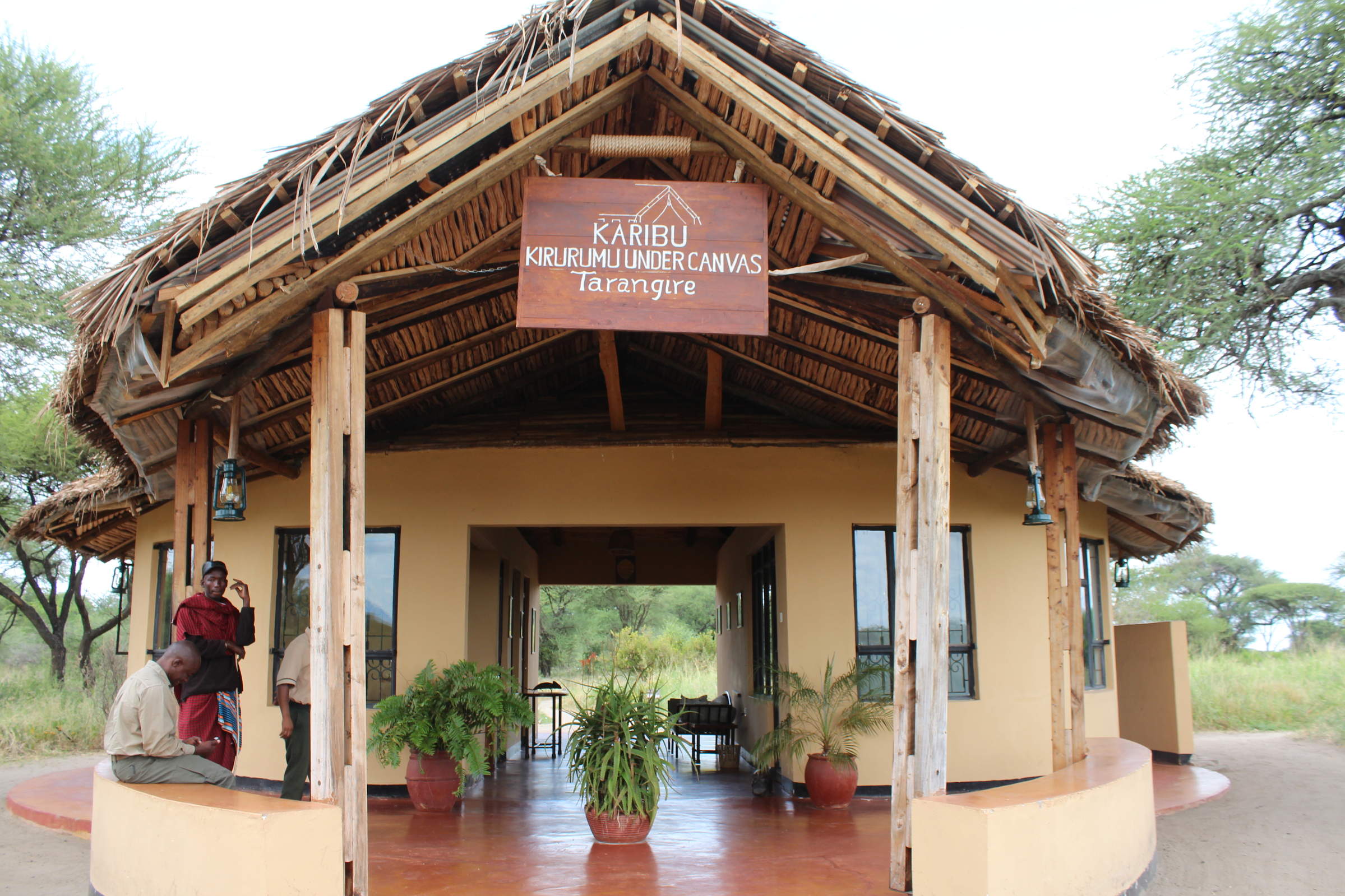
Kirurumu Tarangire
Kirurumu Tarangire Lodge is a simple, small, tented camp positioned just outside the northern boundary of Tarangire National Park.
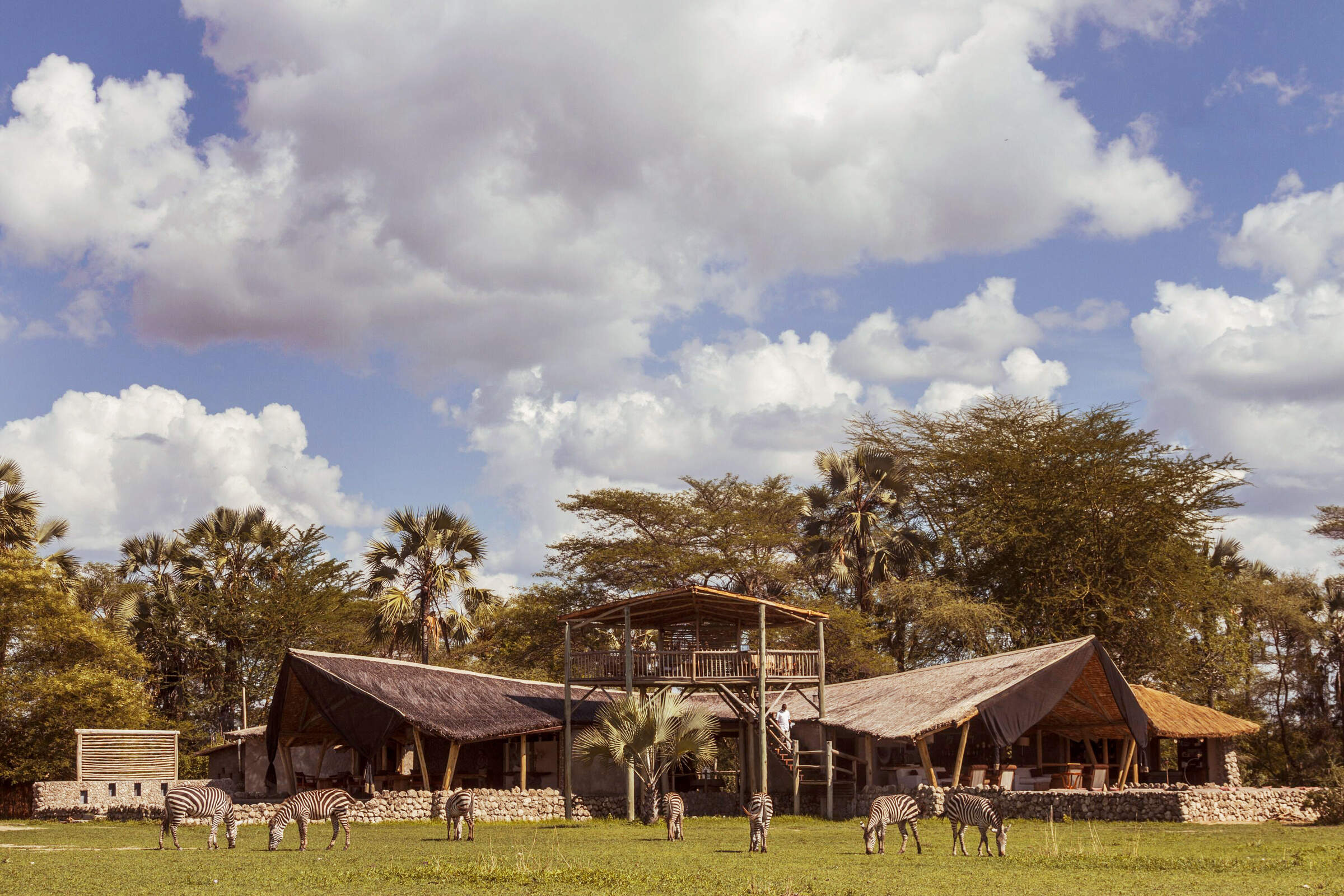
Chem Chem
Chem Chem is a luxury tented lodge on a private concession between Lake Manyara and Tarangire national parks.
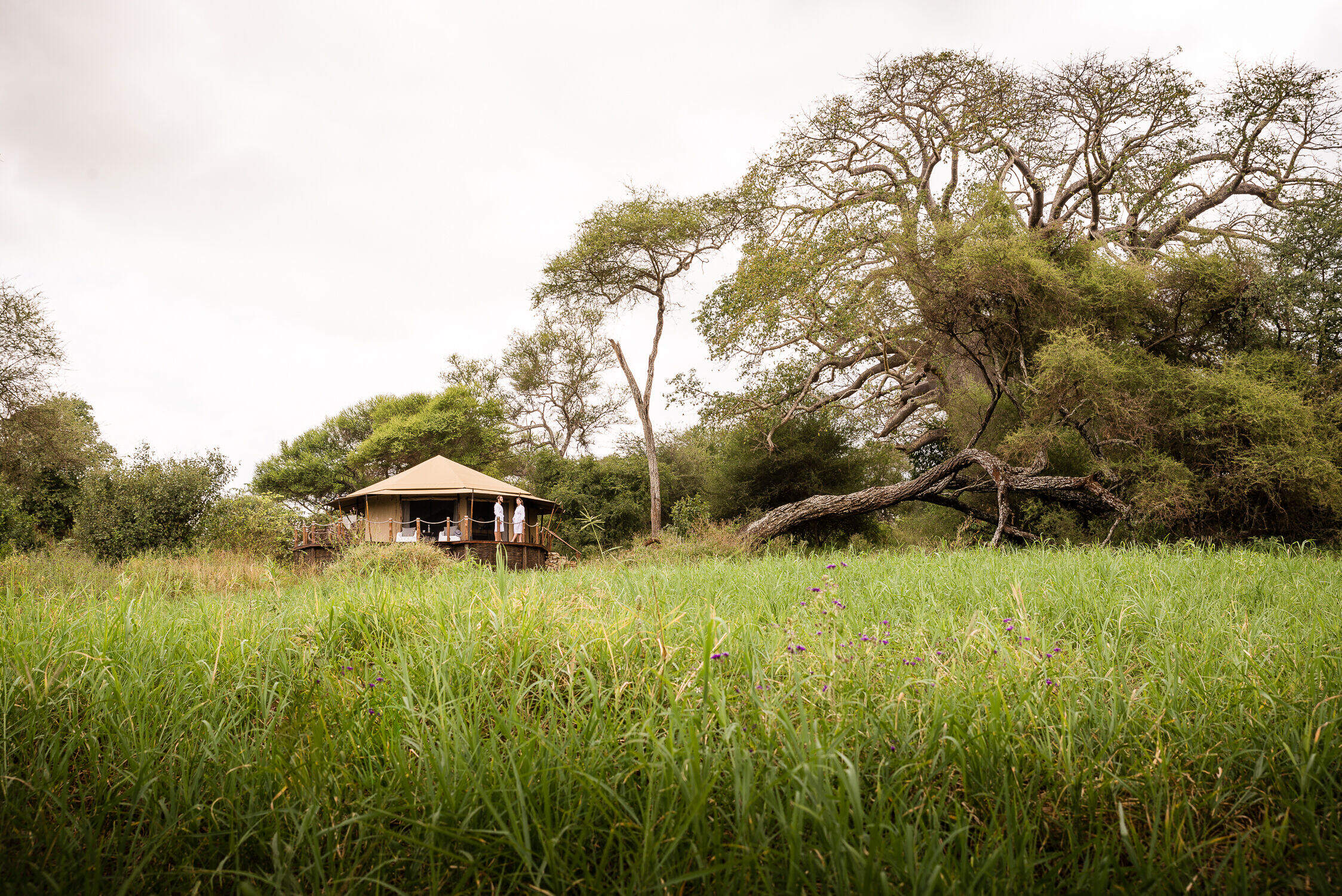
Swala Camp
Swala Camp is a stylish camp for exploring the southern Tarangire, either with a private driver-guide, or using the camp's vehicles and guides.

Tarangire Treetops
Tarangire Treetops is a lovely, high-quality lodge on the outskirts of Tarangire National Park, offering game drives, night drives and safari walks.
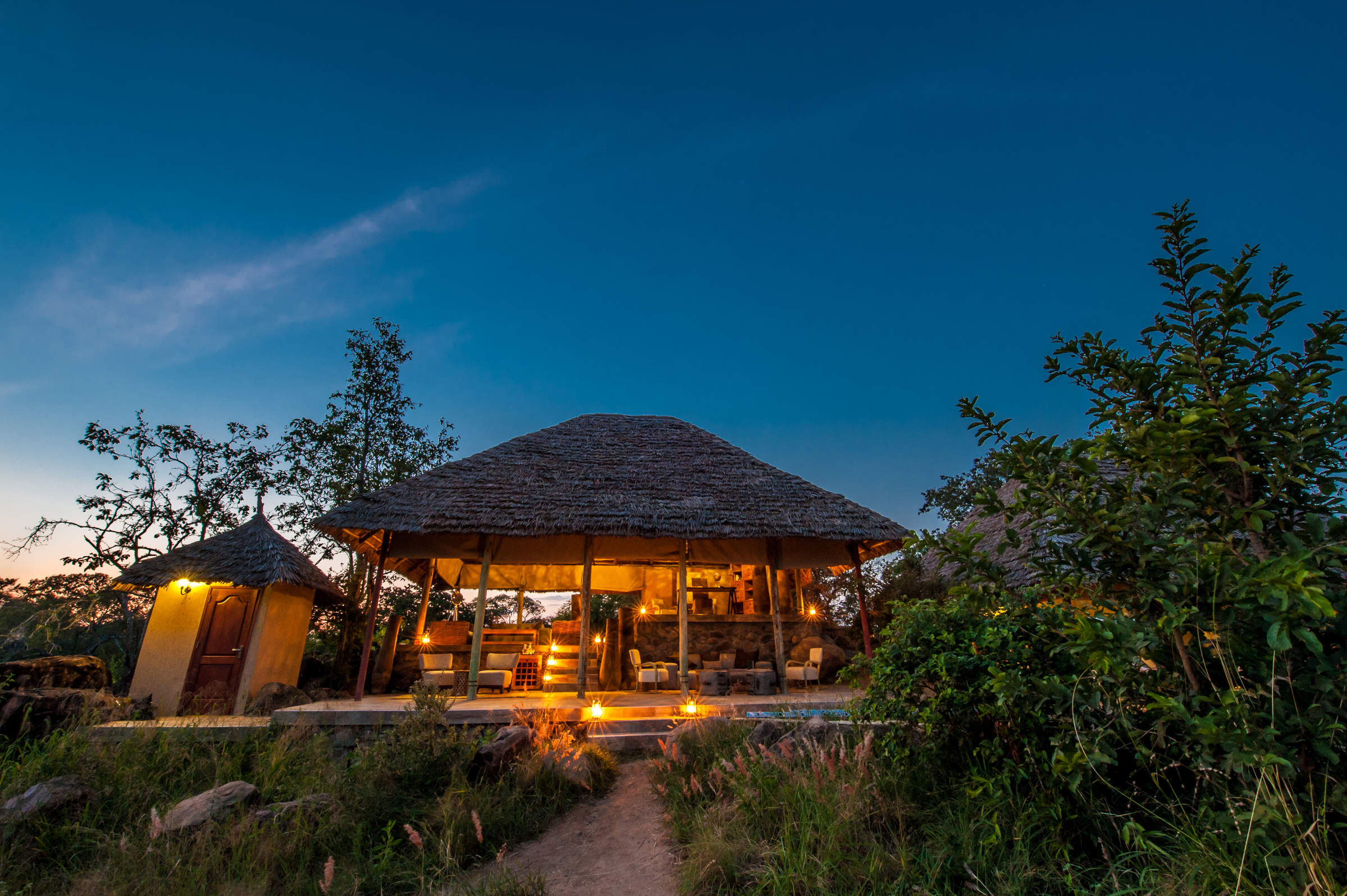
Nimali Tarangire
Nimali is a small camp built in contemporary style on the outskirts of Tarangire National Park in northern Tanzania.
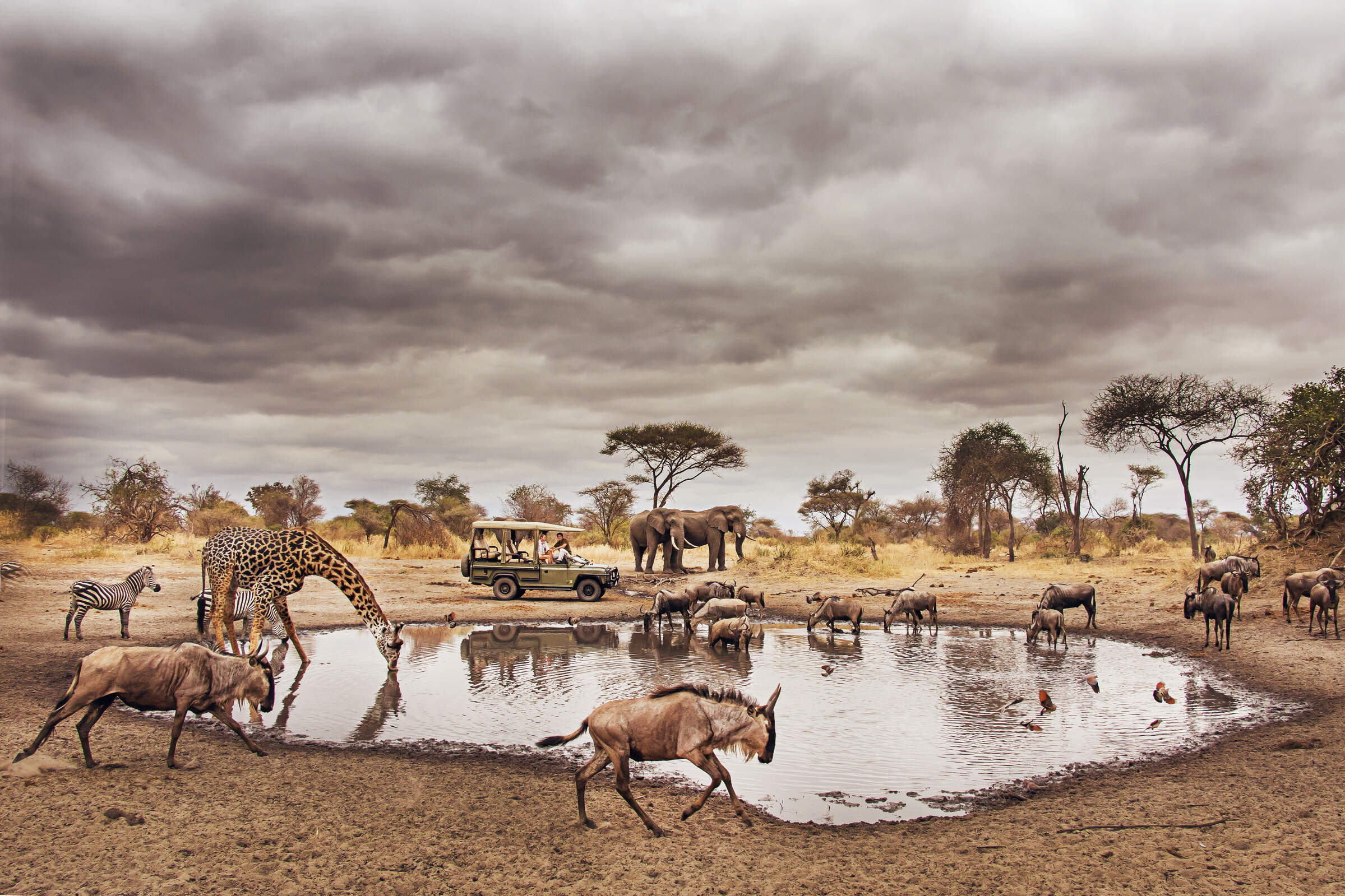
Forest Chem Chem
Located in the Chem Chem Concession and close to Tarangire National Park, Forest Chem Chem is a high-quality tented camp which is booked on an exclusive basis.
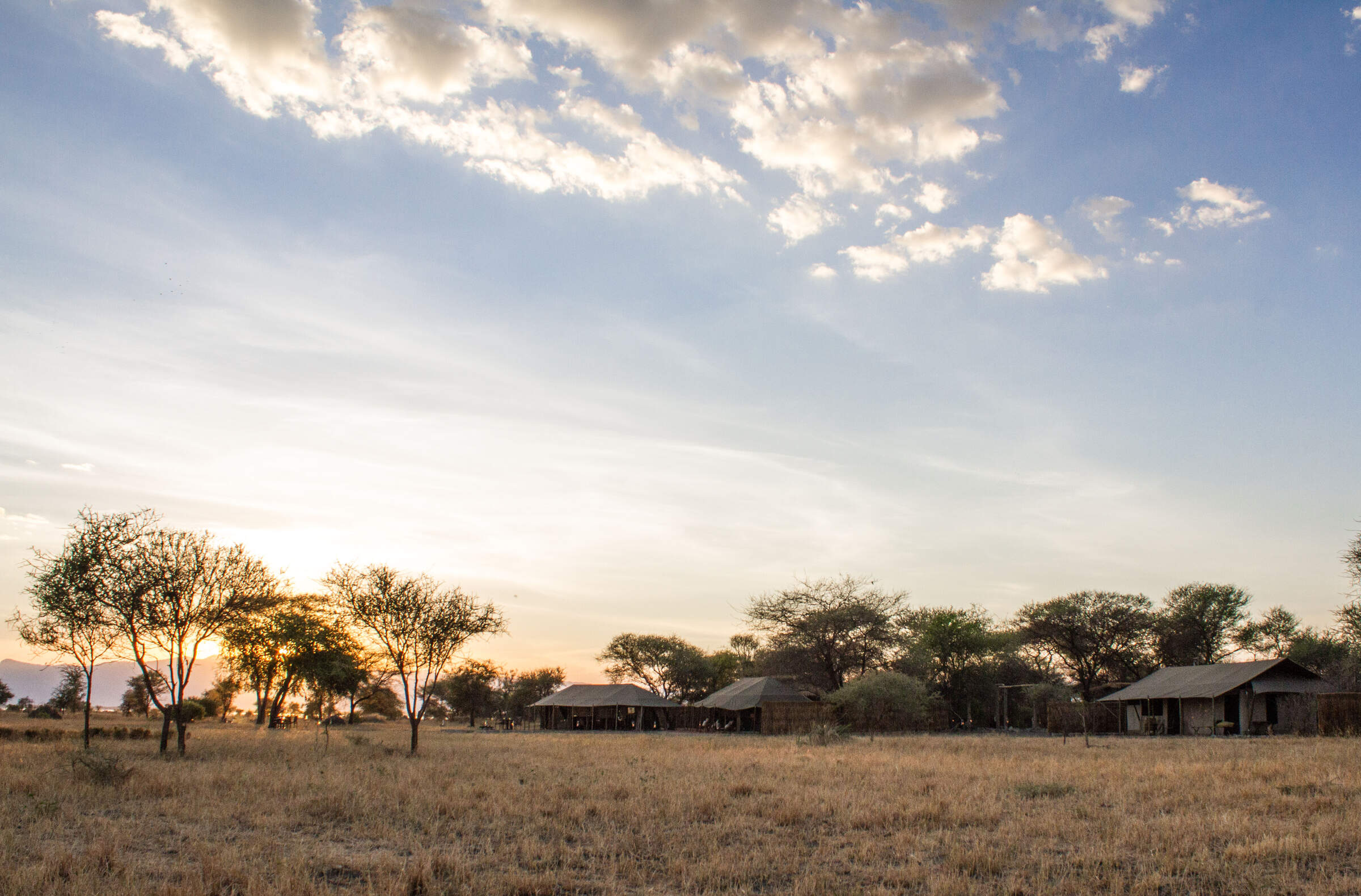
Little Chem Chem
Little Chem Chem is a stylish option near Tarangire National Park, offering real relaxation combined with a variety of safari activities.
When to go to Tarangire National Park
Our month by month guide: What it's like to visit Maramboi Tented Camp in Tarangire National Park
Jan
Feb
Mar
Apr
May
Jun
Jul
Aug
Sep
Oct
Nov
Dec
Tarangire National Park in January
January marks the start of the short dry season. The Tarangire River becomes a crucial water source, attracting diverse wildlife. Elephants, buffaloes, and zebras congregate around the river and swamps. The iconic baobab trees stand out against the landscape, providing food and shelter for animals. Birdwatching is excellent as resident birds display breeding plumage and migrant species are present.
The Silale and Gurusi swamps teem with hippos and crocodiles. While the southern areas of the park may still be wet, the northern regions offer great game viewing. The Matete Woodlands provide opportunities to spot leopards and rare fringe-eared oryx antelopes. January can offer great value for visitors, with quieter park conditions and variable weather.
- Variable weather, dry or rainy periods
- Good for birding, many migrant species present
- Elephant herds gather near Tarangire River
- Lush landscapes ideal for photography
- Quieter after early January rush
Our view
A good time to visit, with pros & cons
Weather in January
Tarangire National Park in February
February in Tarangire National Park is one of the hottest months, with temperatures reaching around 33°C/91°F. The short dry season continues, making it an excellent time for wildlife viewing. The Tarangire River and surrounding swamps become focal points for animal activity. Large herds of elephants, numbering over 3,000, are a major attraction.
The north offers impressive vegetation and birdlife, including large flocks of red-billed quelea birds and various raptors. Birdwatchers will enjoy the park's 550+ species, with northern hemisphere migrants joining resident birds. February is lovely for ballooning, offering unique aerial views of the park's diverse landscapes and wildlife during the cooler morning hours.
- Hot and dry weather prevails
- Large elephant herds visible near water sources
- Excellent time for game drives and safaris
- Baobab trees stand out in dry landscape
- Park less crowded, better wildlife viewing
Our view
A very good time to visit
Weather in February
Tarangire National Park in March
As March arrives in Tarangire, the long rains begin, transforming the landscape. This is an important time for the park's famous baobab trees, which store water in their trunks. While game viewing becomes more challenging due to dispersing wildlife, it's an excellent time for photography as the scenery turns lush and green.
The Tarangire ecosystem, including granitic ridges and river valleys, offers stunning views of the Great Rift Valley. Birdwatching remains rewarding, especially in the swampy floodplains and woodlands. March remains challenging for guided walking safaris, as the vegetation is high and thick.
- Hot with increasing humidity before rains
- Wildlife viewing varies as rains approach
- Quiet park with lower visitor numbers
- Migratory birds still present in good numbers
- Balloon safaris offer stunning aerial views
Our view
A good time to visit, with pros & cons
Weather in March
Tarangire National Park in April
April is the wettest month in Tarangire, with an average of 250mm of rain. The park's landscape is at its lushest, with flowering plants attracting insects and smaller animals. While big game viewing is more challenging due to dense vegetation, it's an excellent time for photographers to capture the vibrant scenery. The Tarangire River and swamps swell, creating picturesque scenes.
Birdwatching remains exceptional, with over 550 species present in the park. Visitor numbers are low, providing a more intimate safari experience.
- Heavy rains with impressive thunderstorms
- Some camps closed due to weather conditions
- Lowest rates and very few other tourists
- Lush green landscape, but wildlife dispersed
- Birdwatching excellent for resident species
Our view
This is not a great time to visit
Weather in April
Tarangire National Park in May
As May progresses in Tarangire, the long rains begin to taper off. The park's diverse habitats, from woodlands to savannahs, are lush and green. While wildlife viewing can still be challenging due to high grass, patient observers may spot leopards in the Matete Woodlands. The swamps, including Silale and Gurusi, are full of water, attracting numerous bird species.
May is an excellent time for photography, with dramatic skies and verdant landscapes. The Tarangire ecosystem is at its most vibrant, showcasing the park's stunning biodiversity. Visitor numbers remain low, offering peaceful game drives. Cultural visits to nearby Maasai communities provide insights into local traditions and lifestyles.
- Rains continue, creating dramatic skies
- Quiet time to visit, avoiding crowds
- Park lush and green with high grass
- Wildlife more dispersed, fewer sightings
- Affordable rates for budget-conscious visitors
Our view
This is not a great time to visit
Weather in May
Tarangire National Park in June
June marks the beginning of the dry season in Tarangire. As the landscape starts to dry, wildlife begins to congregate around permanent water sources. The famous Tarangire River becomes a hub of animal activity, attracting diverse species. Elephant herds become more visible as they move towards reliable water supplies.
June is an excellent time for birdwatching, with over 550 species present in the park. The Lemiyon Triangle in the north offers impressive vegetation and birdlife. As the grass starts to shorten, game viewing improves, especially along the Birungi Circuit. June is lovely for balloon safaris, providing breathtaking views of the awakening landscape and wildlife below.
- Weather transitions from wet to dry
- Wildlife starts concentrating near water
- Park still green with some high grasses
- Visitor numbers increasing gradually
- Good value with shoulder season prices
Our view
A good time to visit, with pros & cons
Weather in June
Tarangire National Park in July
July is a prime month for wildlife viewing in Tarangire. As the dry season progresses, large herds of elephants, buffaloes and zebras gather around the Tarangire River and swamps. The park's famous baobab trees stand out against the increasingly arid landscape. Game drives along the Birungi Circuit offer excellent opportunities to spot lesser kudu and massive elands.
Birdwatching remains rewarding, especially around the park's swamps and woodlands. The Matete Woodlands provide good chances to see leopards and rare fringe-eared oryx antelopes. July is perfect for photography, with clear skies and animals congregating at water sources. Guided nature walks provide intimate encounters with the park's flora and fauna. Sundowner game drives offer magical experiences as the African sun sets over the savannah.
- Dry season begins, excellent wildlife viewing
- Large elephant herds visible near river
- Popular time with higher visitor numbers
- Peak prices due to optimal conditions
- Guided walks offer intimate wildlife experiences
Our view
Fantastic: the very best time to visit
Weather in July
Tarangire National Park in August
August in Tarangire offers exceptional wildlife viewing opportunities. The dry season is in full swing, concentrating animals around the Tarangire River and remaining water sources. Large elephant herds, sometimes numbering in the hundreds, are a common sight. The park's swamps, including Silale and Gurusi, attract diverse wildlife.
Birdwatching is excellent, with many species gathering around water bodies. The iconic baobab trees provide a striking backdrop for photography. August is ideal for balloon safaris, offering panoramic views of the park's diverse landscapes and wildlife. Guided nature walks provide intimate encounters with the park's flora and fauna. Cultural visits to nearby Maasai communities offer insights into traditional lifestyles.
- Dry conditions, animals gather at water sources
- Excellent general wildlife viewing
- Busy season with higher visitor numbers
- Swamps attract diverse wildlife species
- Night drives reveal nocturnal animals
Our view
Fantastic: the very best time to visit
Weather in August
Tarangire National Park in September
September is an excellent month to visit Tarangire. As the dry season peaks, wildlife concentrates around remaining water sources, particularly the Tarangire River. Large herds of elephants, wildebeests, and zebras offer spectacular viewing opportunities. The Matete Woodlands and Birungi Circuit provide chances to spot predators like leopards. Birdwatching remains rewarding, with over 550 species in the park.
The landscape, dotted with iconic baobab trees, offers stunning photographic opportunities. September is ideal for guided walking safaris, allowing visitors to explore the park's ecosystem up close. Balloon safaris provide breathtaking aerial views of the parched landscape and congregating wildlife.
- Fantastic wildlife viewing opportunities
- Parks becoming very dry, animals congregate
- Slightly quieter than peak August period
- Baobab trees in full leaf, great for photos
- Higher chances of seeing large predators
Our view
Fantastic: the very best time to visit
Weather in September
Tarangire National Park in October
October in Tarangire marks the end of the dry season, offering some of the best wildlife viewing opportunities. The Tarangire River and surrounding swamps become crucial for survival, attracting large concentrations of animals. Elephant herds are particularly impressive during this time. The park's famous baobab trees stand out against the parched landscape. Birdwatching is excellent, with many species congregating around remaining water sources.
October is ideal for photography, with clear skies and abundant wildlife. Balloon safaris provide stunning aerial views of the park's varied landscapes and wildlife. As the month progresses, there's a chance of early rains, bringing new life to the park.
- Mostly dry with comfortable temperatures
- Excellent game viewing around water sources
- Lower visitor numbers than earlier months
- Balloon safaris offer breathtaking views
Our view
A very good time to visit
Weather in October
Tarangire National Park in November
November in Tarangire sees the start of the short rains, transforming the landscape. The famous baobab trees begin to flower, creating a lush backdrop. Wildlife starts to disperse as water becomes more widely available, but game viewing remains good. The Tarangire River and swamps continue to attract diverse species. November is excellent for birdwatching as migratory birds arrive, joining the park's 550+ resident species.
As the vegetation greens, photography opportunities abound. Guided nature walks provide insights into the park's changing ecosystem. Cultural visits to nearby Maasai communities offer unique experiences. November can offer great value with shoulder season rates and fewer visitors.
- Variable weather, chance of rain increasing
- Parks quieter, prices more affordable
- Wildlife disperses as rains begin
- Migratory birds start arriving in the park
- Green season begins, landscape transforms
Our view
A good time to visit, with pros & cons
Weather in November
Tarangire National Park in December
December in Tarangire brings a mix of wet and dry conditions. The short rains continue, rejuvenating the landscape. The famous baobab trees are in full leaf, providing shade and food for wildlife. While animals are more dispersed than in the dry season, game viewing remains rewarding. The Tarangire River and swamps continue to attract diverse species.
December is excellent for birdwatching, with migratory birds present alongside resident species. Balloon safaris provide stunning views of the greening landscape. Cultural visits to nearby communities offer insights into local holiday traditions. Despite being a popular time for visitors, especially during the festive season, December can still offer peaceful safari experiences in less-visited areas of the park.
- Variable weather, mix of dry and rainy days
- Good game viewing in Tarangire River area
- Quiet early month, busy during holidays
- Prices vary from low to peak holiday rates
- Lush landscapes after early rains
Our view
A good time to visit, with pros & cons
Weather in December

Looking for inspiration on where to travel next?
Visit our trip chooser to explore your options and find inspiration for your perfect African adventure
Inspire me